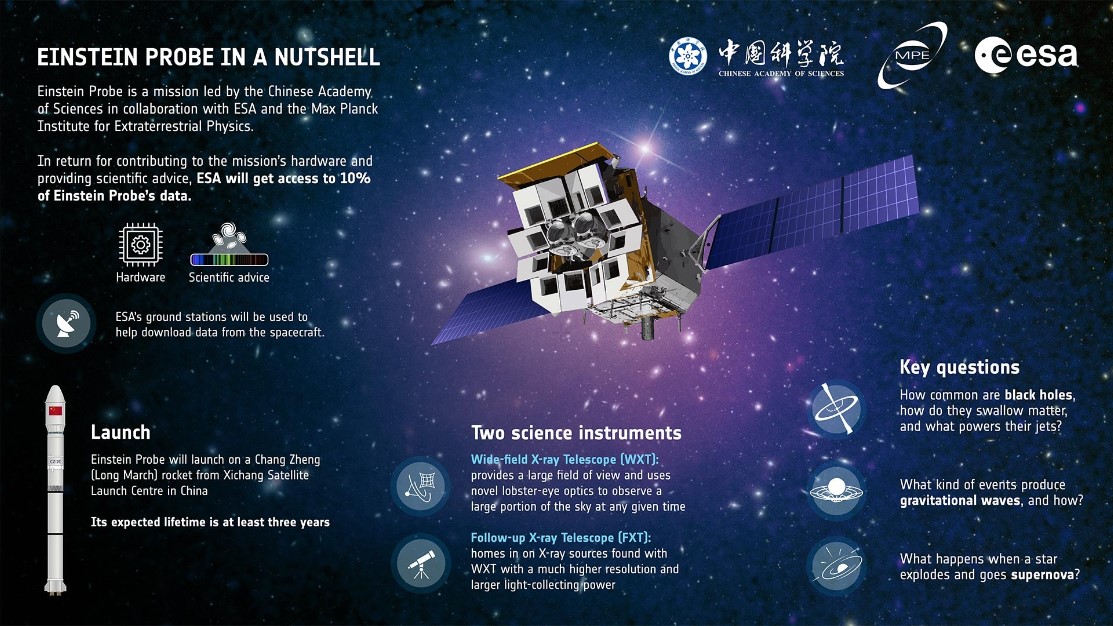China Launches “Lobster Eye” Einstein Probe to Unveil Mysteries of X-Ray Universe

Space News ,China :- China reached another milestone in its space exploration endeavors as it successfully launched the Einstein Probe on Tuesday. The probe, designed to detect X-ray emissions from intense cosmic events, took off from the Xichang Satellite Launch Center in southwestern China via a Long March 2C rocket at 2:03 a.m. (0703 UTC), Jan. 9, marking another achievement for the China Aerospace Science and Technology Corp. (CASC).
The Einstein Probe (EP) represents a significant stride in China's strategic space science initiatives. Over the next three years, the spacecraft aims to observe distant, dramatic celestial interactions, including tidal disruption events, supernovae, and the high-energy electromagnetic counterparts to gravitational wave events. These observations could provide valuable insights into the intricate processes surrounding massive black holes and the formation of ionized matter jets.
Operating at a 600-kilometer altitude with a 29-degree inclination orbit, the 1,450-kilogram EP spacecraft is equipped with a Wide-field X-ray Telescope (WXT). What sets the WXT apart is its innovative "lobster-eye" optics, inspired by the eyes of lobsters, allowing it to delve deeper into X-ray events across a broader spectrum.
The WXT utilizes 12 lobster-eye optics modules, previously tested in a 2022 mission, providing a remarkable field of view spanning 3,600 square degrees. The European Space Agency (ESA) contributed to the mission by supporting the testing and calibration of WXT's detectors and optical elements.
Erik Kuulkers, ESA Project Scientist, emphasizes the EP's strength in observing almost the entire night sky in about 5 hours, thanks to the lobster-eye technique. He notes the capability to swiftly capture unpredictable transient events in X-ray light, crucial for understanding the origins of gravitational wave impulses.
EP's onboard data processing and autonomous follow-up capabilities, including the Follow-up X-ray Telescope (FXT), allow rapid response to detected X-ray events. Kuulkers anticipates that EP will play a pivotal role in identifying the source of gravitational wave impulses observed on Earth.
In exchange for its contributions, ESA will gain access to 10% of the data generated by EP, benefiting the European Einstein Probe Science Team members with diverse interests, ranging from auroral emission on Jupiter to the swallowing of matter by supermassive black holes in other galaxies.
As China continues its dedicated space science missions, EP follows in the footsteps of the DAMPE dark matter probe launched in 2015. Approved in 2017 as part of the Chinese Academy of Sciences’ Strategic Priority Program, EP joins a lineup of ambitious projects exploring phenomena such as magnetars, active galactic nuclei, and the interactions between comets and solar wind ions.
Looking ahead, China's commitment to space exploration remains strong, with plans for upcoming missions, including the launch of the Sino-Franco Space-based multi-band astronomical Variable Objects Monitor (SVOM) in Spring 2024.


